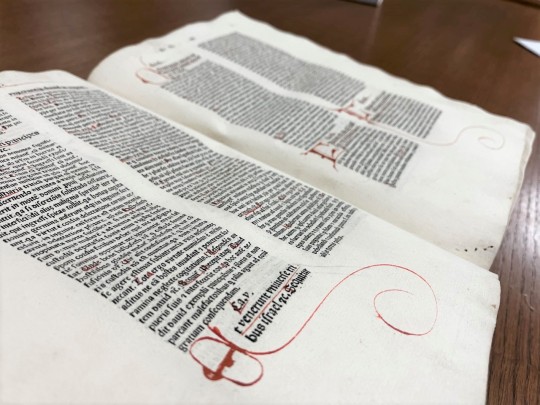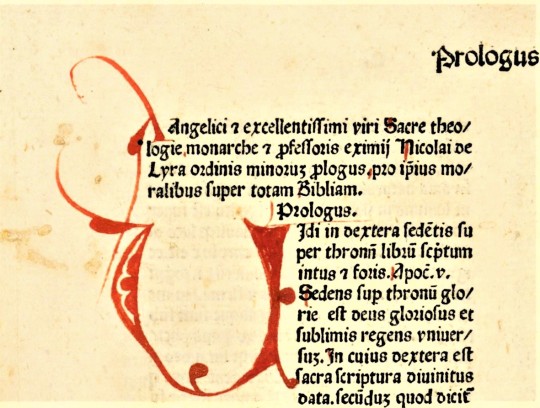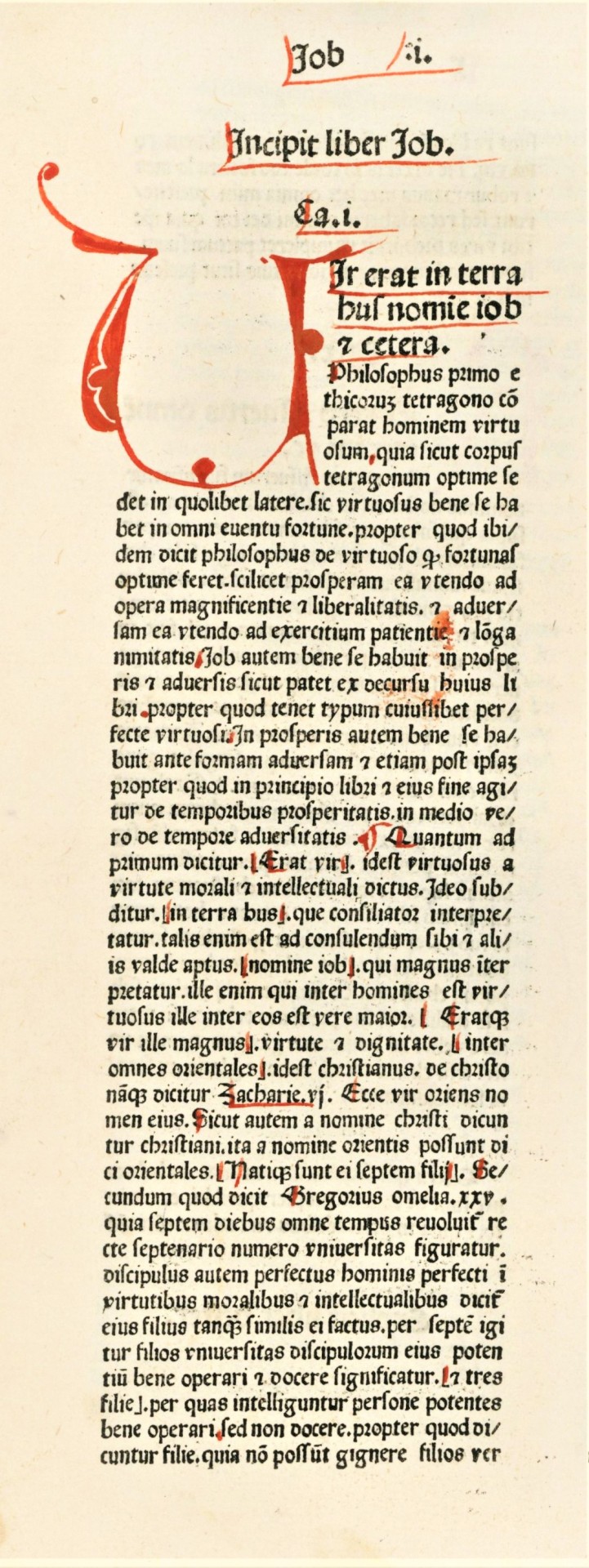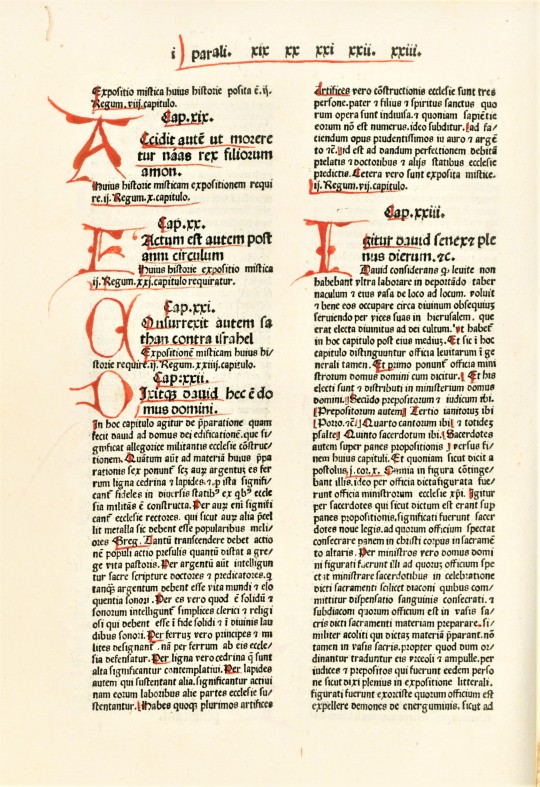#Paulus de Butzbach
Photo









Typography Tuesday
ITALIAN ROTUNDA GOTHIC
One of the few incunables we hold that have all the initials rubricated (i.e., initials completed in red manuscript) is a 1481 printing of Nicolas De Lyra’s biblical commentary Moralia super totam Bibliam, printed in Mantua by Paulus de Butzbach. It uses a typeface modelled after a rounded Gothic manuscript hand known as Rotunda.
The Italian version of the Rotunda, that this typeface is based on, was developed for copying manuscripts at the University of Bologna in the 13th century, and is sometimes referred to as littera bononiensis. This rounded form seems to have developed to accommodate more rapid copying to provide materials for a voracious academic clientele. However, this also increased the amount of space letterforms would occupy, so a series of abbreviation conventions were developed to save space that are especially associated with the Italian Rotunda.
These can be seen throughout the examples shown here, but they are especially vivid in the colophonic text of the last image. For example, the lowercase q with a line beneath the bow signifying the word "qui," or the r rotunda (ꝛ) which follows a letter with a rounded stroke on the right side, such as the one following the o in the word ordine in the second paragraph, following the underlined name of “Nicolaus de Lyra.” You can also see the use of the visually-related Tironian et ⟨⁊⟩ used to signify etcetera. The rubricator has not only completed all the initials, but has also highlighted capital letters in red, marked paragraph openings, and underlined certain words or phrases for emphasis. The humorous artery-like illustration around the rubricated n in the second to last image was likely added much later, perhaps after William Harvey published his findings on the circulation of blood in 1628!
Not much is known about the printer Paulus de Butzbach, although he is quite well-noted as a printer for one of the first three editions of Dante’s Commedia, all three of which appeared in 1472. However, using the raw data in the Incunabula Short Title Catalogue (ISTC) we can say that he seems to have had a relatively short career from 1471/2 to 1481, when our book was printed. A German printer (as most early printers in Italy were), he appears to have begun his career with another German printer Georgius de Augusta at Verona in 1471 or 72. After printing a handful of classical titles in Verona, they moved operations to Mantua in 1472 where the Commedia was printed. They continued to work together and for others there until 1475, when Butzbach’s name begins to appear in colophons by itself, and he continues to print alone until about 1481. In those ten years, Butzbach participated in the printing of some 30 editions. Our copy of Moralia super totam Bibliam is one of only 95 worldwide noted in ISTC.
View other posts on 15th-century types.
View more Typography Tuesday posts.
#Typography Tuesday#typetuesday#Typography Tuesday#Italian Rotunda#Gothic type#littera bononiensis#rubrication#rubricated initials#Paulus de Butzbach#Nicolas De Lyra#Moralia super totam Bibliam#abbreviations#Incunabula Short Title Catalogue#ISTC#15th century type
64 notes
·
View notes
Photo

Library Shelfie Day
For Library Shelfie Day, a shelfful of incunabula in chronological order:
Martial. Epigrammatum. Venice: Johannes de Colonia and Johannes Manthen, 1475.
St. Antoninus. Confessionale. Venice: Raynaldo de Novimagio, 1479.
Nicholas de Lyra. Moralia super totam Bibliam. Mantua: Paulus de Butzbach, 1481.
St Augustine. De civitate dei. Venice: Bonetus Locatellus, for Octavianus Scotus, 1486.
Horace. Opera. Venice: Bernardo di Tridino, 1486.
St. Augustine. Liber Epistolarum. Basel: Johann Amerbach, 1493
St. Jerome. Commentaria in Bibliam. Venice: Joannes and Gregorius de Gregoriis, de Forlivio, 1497-98. 2 volumes.
Biblia Latina. Venice: Hieronymus de Paganinis, 1497.
Pomponium Laetum. Romanae historiae. Venice: Bernardinum Venetum de Vitalibus, 1500.
View other posts on incunabula.
View posts from Library Shelfie Days past.
111 notes
·
View notes